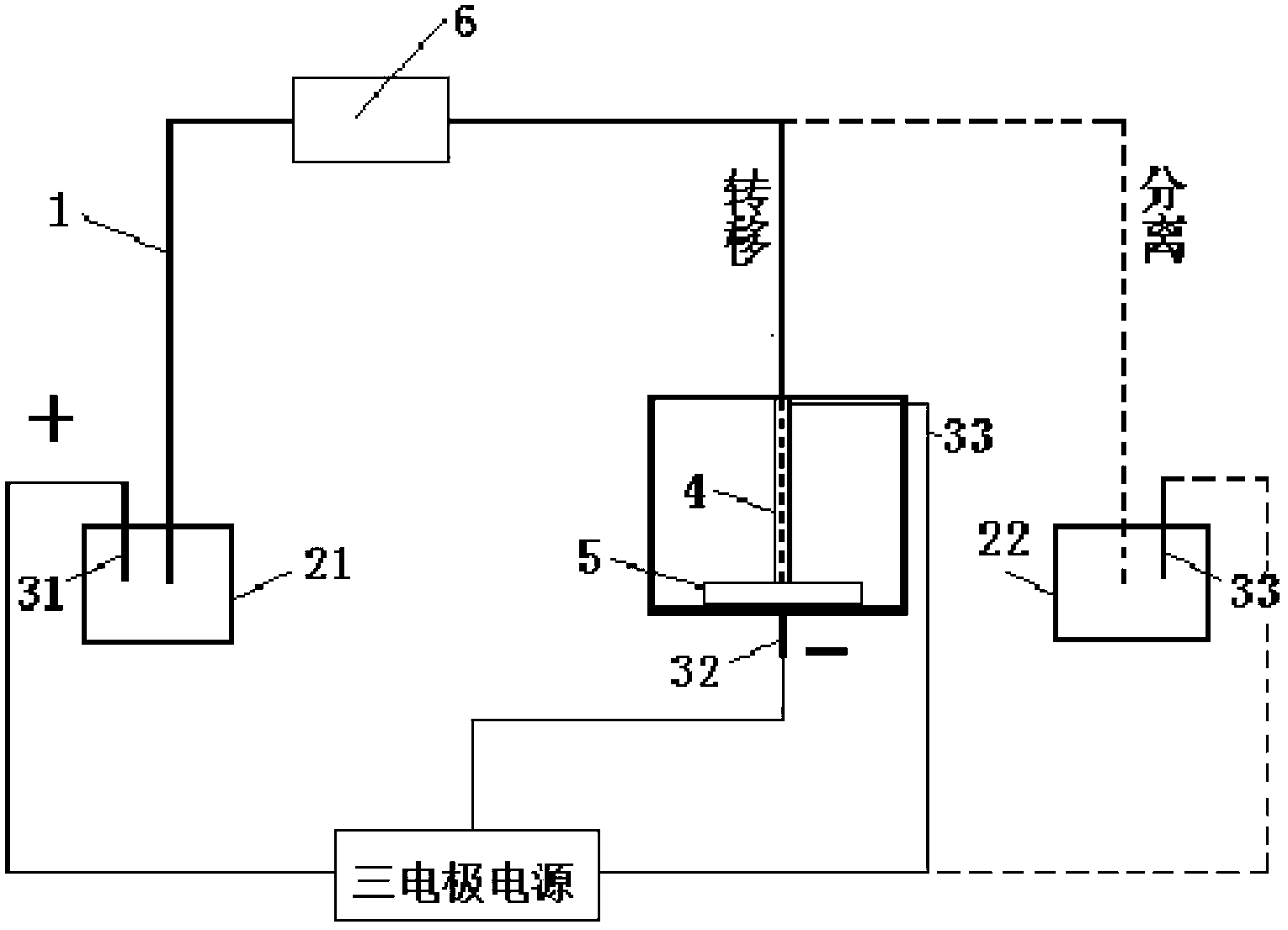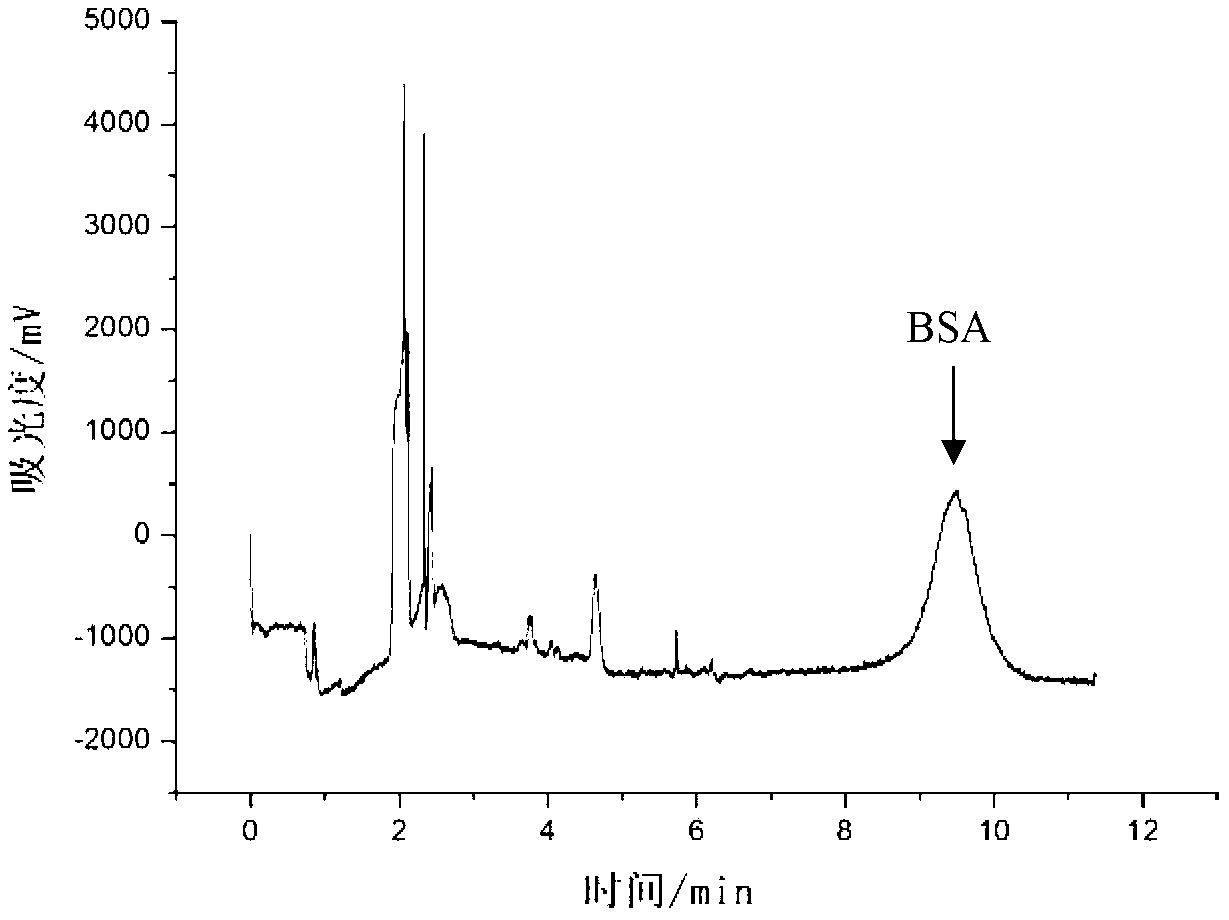Device and method for transferring and analyzing proteins in gel on line
A protein and gel technology, applied in the field of separation and detection of proteins, can solve the problems of sample loss, difficulty in meeting the automation needs of proteomics, poor repeatability, etc., and achieve the effect of improving efficiency
- Summary
- Abstract
- Description
- Claims
- Application Information
AI Technical Summary
Problems solved by technology
Method used
Image
Examples
Embodiment 1
[0057] Example 1: Verification of the feasibility of transferring proteins in gels by three-electrode capillary electrophoresis
[0058] Transfer experiments were carried out from the sample simulation gel containing 0.5 mg / mL BSA and the corresponding blank simulation gel using the method of online transfer and analysis of proteins in the gel of the present invention. Among them, the role of the blank simulated gel is to compare with the sample simulated gel. By comparing the transfer electrophoresis patterns of the two, the background interference in the sample simulated gel transfer pattern is eliminated, and the peak position of the protein is determined. The results are shown in Figure 3. It can be clearly seen from Figure 3 that the peak with a peak eluting time of less than 5 minutes comes from the interference of the gel itself, and it is confirmed that the peak at 9 minutes is the BSA peak. The experimental results verified the feasibility of the method of three-elect...
Embodiment 2
[0060] Example 2: Comparison of the effect of two-electrode transfer method and three-electrode transfer method on transferring protein from gel
[0061] In 2002, Lee proposed a capillary two-electrode method for transferring proteins in a gel, that is, the outlet end of the capillary is connected to the positive electrode, and the lower end of the gel is connected to the negative electrode. In order to verify the advantages of the three-electrode transfer method proposed by the present invention, a comparative study was carried out between the two, and the transfer results of the two methods were compared using the same model sample PAGE gel, transfer voltage, transfer time and capillary and buffer conditions , the voltage across the gel was 4.5V during the three-electrode transfer. Due to the problem of reproducibility, time correction was performed on the peak area, and the ratio of the peak area to the peak time was used as the basis for judging the amount of protein trans...
Embodiment 3
[0062] Example 3: Optimization of protein transfer conditions in gels
[0063] The transfer of protein from the gel to the capillary includes two processes, one is that the protein migrates from the inside of the gel to the gel surface, and the other is that the protein enters the capillary from the gel surface. In the first process, the factors that affect the speed of protein migration are the size of the applied voltage on the gel and the size of the gel pores. One provides the driving force for protein transfer, and the other determines the resistance of proteins when they pass through the gel network. The second process is actually an electrokinetic sampling process with the help of an external electric field. Sample molecules enter the capillary under the joint action of EOF and electrophoresis. From the formula for calculating the injection volume in the electrokinetic injection method (where μ a is the electrophoretic mobility of the substance, μ EOF is the elect...
PUM
 Login to View More
Login to View More Abstract
Description
Claims
Application Information
 Login to View More
Login to View More - Generate Ideas
- Intellectual Property
- Life Sciences
- Materials
- Tech Scout
- Unparalleled Data Quality
- Higher Quality Content
- 60% Fewer Hallucinations
Browse by: Latest US Patents, China's latest patents, Technical Efficacy Thesaurus, Application Domain, Technology Topic, Popular Technical Reports.
© 2025 PatSnap. All rights reserved.Legal|Privacy policy|Modern Slavery Act Transparency Statement|Sitemap|About US| Contact US: help@patsnap.com



